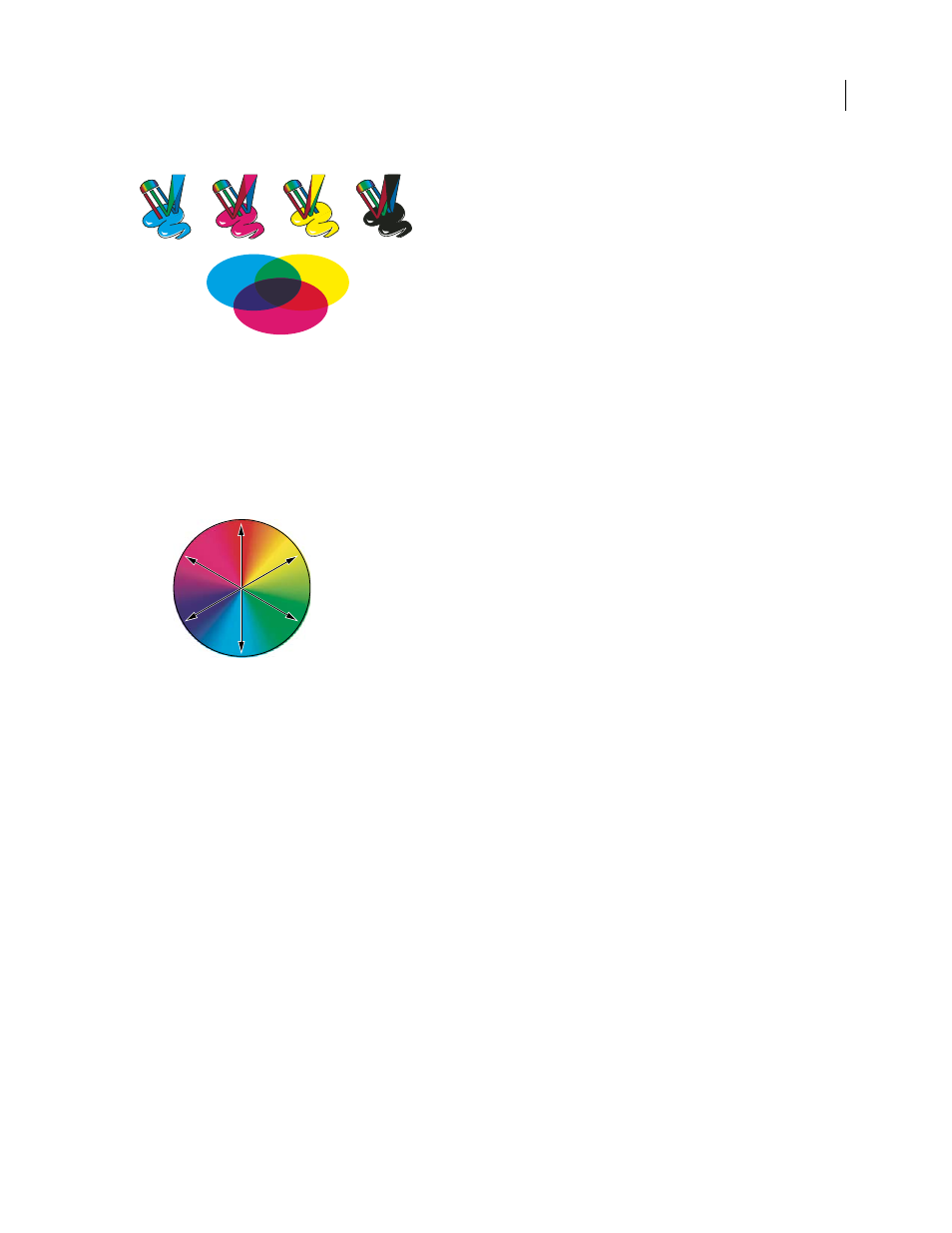Color models, spaces, and modes, See also – Adobe Photoshop CS3 User Manual
Page 115

PHOTOSHOP CS3
User Guide
108
Subtractive colors (CMYK)
C. Cyan M. Magenta Y. Yellow K. Black
The color wheel
If you’re new to adjusting color components, it helps to keep a standard color wheel diagram on hand when you work
on color balance. You can use the color wheel to predict how a change in one color component affects other colors
and also how changes translate between RGB and CMYK color models.
Color wheel
R. Red Y. Yellow G. Green C. Cyan B. Blue M. Magenta
For example, you can decrease the amount of any color in an image by increasing the amount of its opposite on the
color wheel—and vice versa. Colors that lie opposite each other on the standard color wheel are known as comple-
mentary colors. Similarly, you can increase and decrease a color by adjusting the two adjacent colors on the wheel,
or even by adjusting the two colors adjacent to its opposite.
In a CMYK image, you can decrease magenta either by decreasing the amount of magenta or by increasing its
complement, which is green (the color on the opposite side of the color wheel from magenta). In an RGB image, you
can decrease magenta by removing red and blue or by adding green. All of these adjustments result in an overall color
balance containing less magenta.
See also
“Choose a color with the Adobe Color Picker” on page 120
Color models, spaces, and modes
A color model describes the colors we see and work with in digital images. Each color model, such as RGB, CMYK,
or HSB, represents a different method (usually numeric) for describing color.
C
M
Y
K
B
R
0/360
180
90
270
Y
G
C
M
